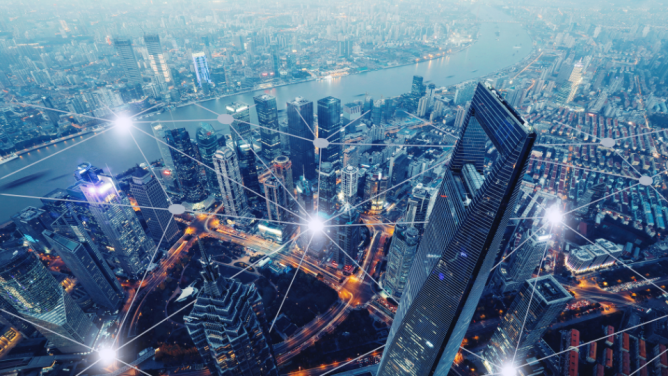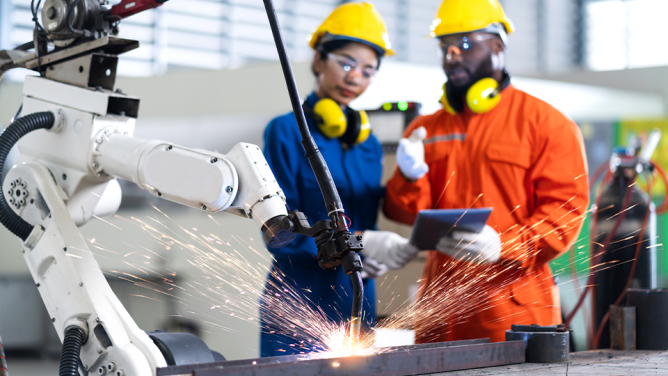
Could you start by telling us about the major work transformations happening today?
Digital technology and the automation trend are undoubtedly the most noteworthy technological transformations happening right now. These trends aren’t entirely new but they’re destined to grow. There are numerous consequences to such transformations, leading to different developments.
First of all, there is job polarization: on one hand, we can see a sharp drive in job creation for specialist skilled roles, while on the other, there’s also a rise in unskilled, non-conventional, ”gig” economy jobs. Service-oriented industries like people care or sales remain healthy and stable. On the contrary, routine-based, middle-skilled jobs are becoming increasingly redundant. On the whole, we’re seeing a higher skilled workforce.
What’s more, despite technology’s contributions, physical stresses have not disappeared. Technology liberates work, in the sense that certain difficult tasks are eliminated, however it also creates new difficult working conditions. This trend is evident in the logistics sector. Machines impose a faster rhythm, intensifying the workload. In factories, operators follow commands from an IT system, which often imposes a fast pace. By removing all human contact, this technological interface also plays a role in de-humanizing jobs. The same trend can be seen in skilled roles. Certain operators in the finance industry spring to mind, whose only role is to activate trading algorithms….
For a more optimistic interpretation, we could consider that technology is going to remove the most difficult working tasks, but this isn’t systematic. The trend also sees a rise in repetitive jobs, whose content are poor and don’t foster human contact.
What investments are needed to meet these challenges?
The main focus is the need for staff education and training. The minimum level for working in proper conditions is today much higher than in the past. The issue of professional training is pretty general but it remains essential. This of course applies to digital education, but we mustn’t forget fundamental topics such as the quality of communication. The majority of digital technology is transmitted orally or in writing: people who have knowledge gaps at this level (and unfortunately this still affects many people) risk being cut off from tomorrow’s jobs.
As for technology, there is a global approach. It is about working with designers and engineers who develop tools designed to invent procedures that “free up” employees. Technology isn’t neutral, it doesn’t happen on its own. That’s why there’s real work to be done in creating an interface between technologies that supply companies (automation, robots) and the human dimension. Not only is it a design issue, but it’s also linked to human resources. For example, when faced with repetitive tasks, a company must try and favor versatility in order to reproduce job variety….
So what direction should the future of work take?
The future of work must tend towards reducing both physically and psychologically demanding tasks. I also believe that technological progress can contribute towards having more free time and opening up the idea of a society in which people work less. If tech evolution continues, we can imagine that productivity gains lead to a reduction in working hours, freeing up time for family activities, hobbies or even voluntary work.
It is important for businesses to work in this direction. Many studies show that employee wellbeing correlates to commitment at work. From a practical point of view, it is also a way to prevent absences related to occupational illness or burns outs. A huge effort is required in educating businesses and demonstrating the costs linked to too many constraints and too much stress in the workplace.
To tie this in to some of Leonard’s favorite topics, what impact do such transformations have on space in general and, more particularly, on the city?
There is no longer one way of doing things in the workplace, as people can now hot-desk or work from home. This is a pretty important change in terms of space and the city. Today, workers have a more positive outlook when it comes to teleworking. However, the topic reveals a certain number of limits, such feeling cut off from a group and a reduced team spirit. This issue is all the more important in big cities, as rising urban land prices is encouraging businesses to reduce their office size.
This is a major issue for companies. They need to find and create moments to bring people together collectively. Meetings, seminars or shared meals… apart from their primary functions, they help maintain this bond. It is impossible to create and maintain this bond remotely. You can’t replace human interaction with a platform, not even in real time.
My whole thinking here is to link the human dimension to the uses of new digital technology. To imagine the future of work, we must think about how jobs are organized mirroring technology.


